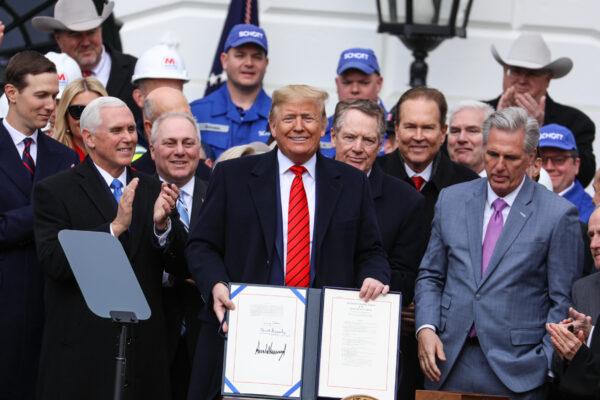Mexico’s President Unveils Strategy to Reduce Chinese Imports
Claudia Sheinbaum also supported the U.S.-Mexico-Canada trade agreement—set for review in 2026—arguing that it is essential for competing with China.
On Monday, Mexico’s President Claudia Sheinbaum announced a new economic strategy aimed at decreasing imports from China amid increasing pressure from the United States and Canada.
Plan Mexico is designed to lessen the Mexican textile and automotive sectors’ reliance on imports from China, while also providing support to local steel manufacturers who claim that Chinese imports are driving down their prices.
Sheinbaum reiterated her defense of the U.S.-Mexico-Canada (USMCA) trade pact, which is up for review in 2026.
She stated, “It has proven to be one of the best trade agreements in history, and it is the only way we can compete with Asian countries, particularly China.”
Last week, Ontario’s Premier Doug Ford mentioned on Fox News: “China is the problem. China is sending cheap parts to Mexico, and then Mexico is adding a ‘Made-in-Mexico’ label and exporting them to the U.S. and Canada, which undermines American and Canadian jobs. Mexico has to make a decision: either be with Beijing or Washington.”
Recently, Mexico has implemented tariffs aimed at e-commerce platforms Shein and Temu.
Region With ‘Greatest Potential’
However, she expressed, “Our objective is to expand across the entire American continent, which is the vision we wish to pursue to develop the region into one of the greatest potentials on the planet.”
She emphasized that economic growth would be prioritized and that her proposed policies aim to enhance investment and elevate Mexico to one of the world’s top 10 economies by 2030.
Currently, Mexico ranks as the world’s 12th largest economy, after Russia and Canada.
Sheinbaum outlined plans to eliminate bureaucratic obstacles and create a more business-friendly environment, targeting an investment rate of 28 percent of GDP, along with the addition of 1.5 million manufacturing jobs.
Her predecessor and mentor, López Obrador, frequently clashed with the private sector; however, her economy minister, Marcelo Ebrard, remarked that economic growth requires a, “collective job,” and expressed gratitude to the private sector for charting what he referred to as a “navigational guide for the new era we are entering.”
The Mexican government has promised to enhance customs enforcement, a key request from the incoming Trump administration.
Sheinbaum, who was a climate scientist before entering politics, affirmed her commitment to environmental goals and aims for Mexico’s energy grid to run on 45 percent sustainable energy by 2030.
López Obrador invested billions in the state-owned oil company Pemex, which is overleveraged and faced criticism for pollution issues.
As Trump returns to the White House on Monday, he reiterated on January 7 his plan to impose tariffs on Mexico and Canada, citing concerns over illegal border crossings and the smuggling of illicit substances and weapons into the United States from both countries.

President Donald Trump holds up the signed United States–Mexico–Canada Agreement, known as USMCA, during a ceremony on the South Lawn of the White House on Jan. 29, 2020. Charlotte Cuthbertson/The Epoch Times
Reuters contributed to this report.



